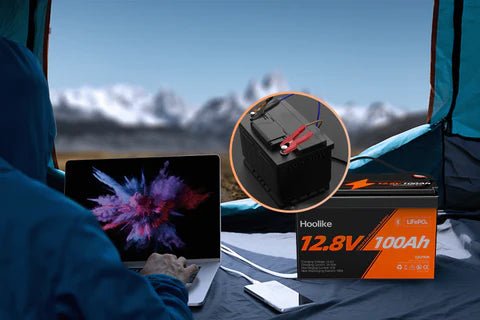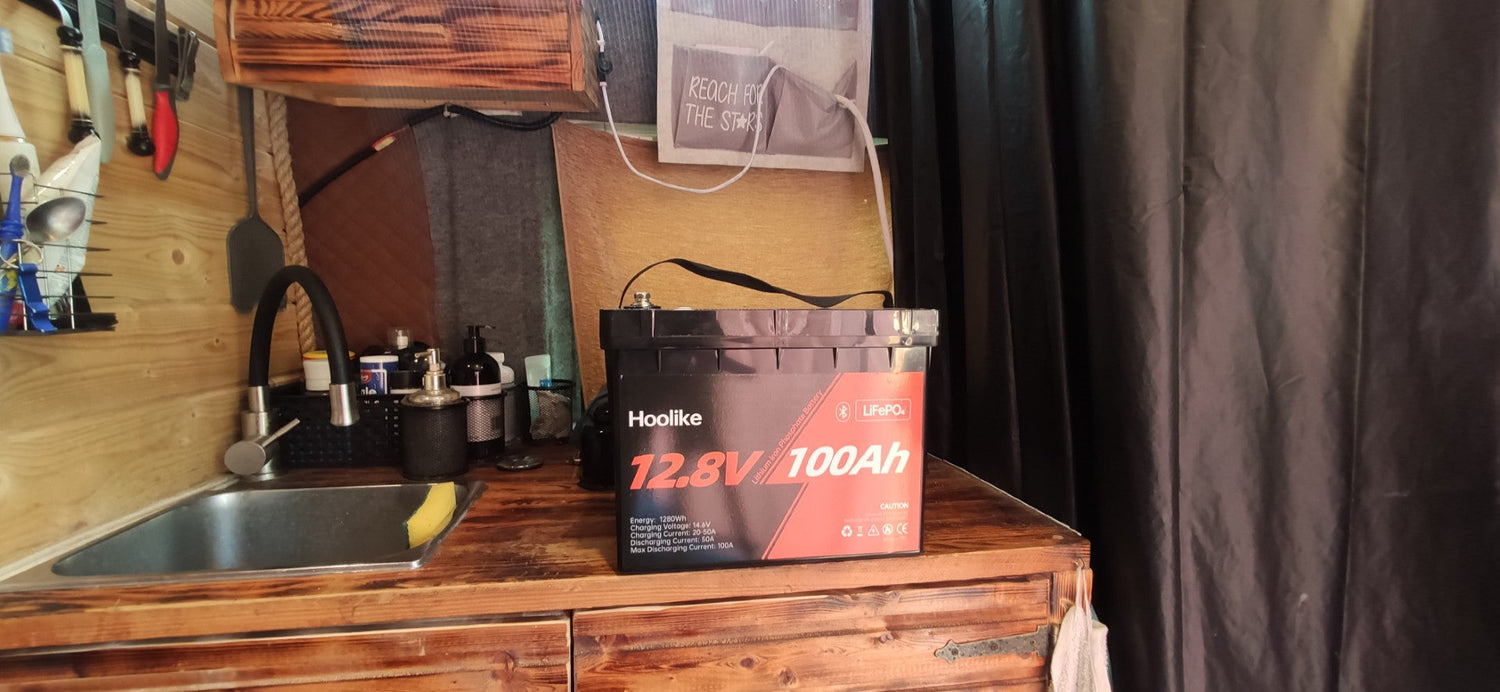Storing your LiFePO4 (lithium iron phosphate) batteries correctly is crucial for maximizing their performance and extending their lifespan. This guide will walk you through the essential care and maintenance tips to ensure your batteries remain in optimal condition, especially when stored for extended periods.
Understanding LiFePO4 Batteries
LiFePO4 batteries, a type of lithium-ion battery, are renowned for their stability, high cycle life, and efficiency. These qualities make them a preferred choice for a wide range of applications, from electric vehicles to renewable energy storage. However, to fully capitalize on the benefits of LiFePO4 batteries, it is essential to understand how to properly store them, especially during periods of non-use.
What Makes LiFePO4 Batteries Unique?
LiFePO4 batteries stand out among other lithium-ion battery types due to their inherent stability and safety. Unlike other lithium-ion batteries, which can be prone to thermal runaway—a dangerous situation where the battery overheats and potentially catches fire—LiFePO4 batteries have a much lower risk of overheating. This safety feature is largely due to the robust chemical structure of lithium iron phosphate, which is more resistant to the stresses that can cause other batteries to fail.
In addition to their safety, LiFePO4 batteries are known for their long cycle life. A battery's cycle life refers to the number of complete charge and discharge cycles it can undergo before its capacity falls below a certain percentage of its original value. LiFePO4 batteries can typically endure thousands of cycles, which translates to many years of reliable performance. This makes them an excellent investment for applications that require long-term energy storage solutions, such as solar energy systems or electric vehicles.
Another notable characteristic of LiFePO4 batteries is their efficiency. They have a high energy density, meaning they can store a significant amount of energy relative to their size. This makes them ideal for use in compact devices or vehicles where space is at a premium. Furthermore, LiFePO4 batteries have a low self-discharge rate, which means they retain their charge well when not in use. This is particularly beneficial for applications where the battery may be stored for extended periods before being used.
The Importance of Proper Storage
To maintain the high performance of LiFePO4 batteries, proper storage is crucial, especially if the batteries will not be used for an extended period. Incorrect storage can lead to a reduction in battery capacity, a shortened cycle life, and even permanent damage to the battery. Therefore, understanding the key factors that influence the storage of LiFePO4 batteries is essential.
Temperature ControlTemperature is one of the most critical factors in the storage of LiFePO4 batteries. Ideally, these batteries should be stored at room temperature, typically between 20°C to 25°C (68°F to 77°F). Storing them in environments that are too hot or too cold can significantly impact their performance and lifespan.
High temperatures can accelerate the degradation of the battery’s internal components, leading to a decrease in capacity and an increase in the likelihood of self-discharge. On the other hand, extremely low temperatures can slow down the chemical reactions within the battery, making it difficult to charge and discharge effectively. If you need to store LiFePO4 batteries in colder environments, it’s essential to ensure they are not fully discharged, as this can increase the risk of permanent damage.
State of ChargeThe state of charge (SOC) at which a LiFePO4 battery is stored also plays a significant role in maintaining its health. Unlike some other battery types that require a full charge before storage, LiFePO4 batteries should be stored at a partial charge. The recommended SOC for long-term storage is typically between 50% and 70%. Storing the battery at this level helps minimize stress on the battery’s internal structure, thereby preserving its capacity and extending its cycle life.

It’s important to avoid storing LiFePO4 batteries at a full charge or completely discharged. Storing at a full charge can accelerate the aging process while storing in a fully discharged state can lead to a condition called “deep discharge,” which can permanently damage the battery and significantly reduce its lifespan.
Humidity and EnvironmentThe environment in which LiFePO4 batteries are stored should be dry and free from excessive humidity. High humidity levels can lead to condensation, which can cause corrosion of the battery’s terminals and other metal components. Corrosion can lead to poor electrical connections and ultimately reduce the efficiency and safety of the battery.

If possible, store the batteries in a clean, dry environment with low humidity. Additionally, it’s advisable to keep the batteries away from direct sunlight and other sources of heat, as these can increase the temperature of the battery and lead to the issues previously mentioned.
Regular Maintenance and MonitoringEven when not in use, it’s essential to regularly check on stored LiFePO4 batteries. Periodically monitoring the state of charge and the environment can help prevent any issues from arising. If you notice that the battery’s charge is dropping significantly, it may be necessary to recharge it to the recommended SOC level.
Additionally, performing regular maintenance, such as cleaning the terminals and checking for any signs of corrosion or damage, can help ensure that the batteries remain in good condition while in storage.
Optimal Storage Conditions
Temperature ControlMaintaining the proper temperature for your LiFePO4 battery is crucial for ensuring its long-term performance and safety. Keeping your battery in a cool and dry place is one of the simplest yet most effective ways to preserve its lifespan. When a LiFePO4 battery is exposed to extreme temperatures, particularly heat, the internal components can undergo accelerated degradation. This degradation specifically affects the lithium ions within the battery, leading to a reduction in the battery's overall effectiveness. Over time, this can result in a diminished ability to hold a charge, reduced efficiency in power delivery, and a potential decrease in the battery's overall lifespan. The chemical reactions inside the battery are highly sensitive to temperature fluctuations, and even slight deviations from the recommended storage conditions can have a significant impact on the battery's performance.

The ideal storage temperature for a LiFePO4 battery is typically between 5°C and 20°C (41°F and 68°F). Staying within this temperature range is essential to avoid the adverse effects that extreme temperatures can cause. High temperatures can lead to thermal stress, which not only degrades the battery's chemical structure but also increases the risk of thermal runaway, a dangerous condition where the battery overheats uncontrollably. Conversely, storing the battery in an environment that is too cold can slow down the battery's internal chemical processes, reducing its ability to function effectively and potentially leading to a loss of capacity. By keeping your battery within the recommended temperature range and ensuring it remains dry, you can significantly enhance its longevity, maintain its safety, and ensure that it continues to perform reliably over time.
Charge Level MaintenanceProper charge level maintenance is critical to ensuring the longevity and performance of your LiFePO4 battery. It is important to avoid storing your batteries either fully charged or fully discharged, as both conditions can place undue stress on the battery's internal components. When a battery is stored fully charged, the high voltage can cause the battery's cells to degrade more quickly over time, leading to a reduction in the battery's overall cycle life. Conversely, storing a battery in a deeply discharged state can result in the cells dropping to dangerously low voltages, which can cause permanent damage and significantly reduce the battery's ability to hold a charge in the future. The ideal practice is to store your LiFePO4 battery at a charge level of 50% to 60%. This range is optimal because it minimizes the internal stress on the battery, allowing it to maintain its capacity and performance over a longer period.

In addition to storing your battery at the correct charge level, it is also essential to periodically check the charge level during extended storage. Over time, even a battery stored at the proper charge level can experience a gradual decrease in voltage due to natural self-discharge. This is particularly important to monitor if the battery will be in storage for several months or more. By checking the charge level every few months, you can ensure that the battery does not fall into a deep discharge state, which could compromise its performance and lifespan. If the charge level has dropped significantly, it is advisable to recharge the battery to the recommended 50% to 60% level to maintain its health. Regularly monitoring and adjusting the charge level will help you avoid the pitfalls of deep discharge and ensure that your LiFePO4 battery remains in peak condition when you need it.
Avoid Moisture and Direct SunlightProper storage conditions are crucial for maintaining the longevity and safety of your LiFePO4 batteries, and two key factors to consider are moisture and exposure to direct sunlight. Storing your batteries in a dry environment is essential to prevent moisture accumulation, which can lead to a range of damaging effects. Moisture can seep into the battery casing, causing corrosion of the internal components, including the terminals and connectors. This corrosion can result in poor electrical connections, reducing the battery's efficiency and potentially leading to a loss of power. Over time, if moisture continues to affect the battery, it can lead to more severe damage, compromising the integrity of the battery's structure and ultimately shortening its lifespan. Therefore, ensuring that the storage area is free from humidity and moisture is critical to preserving the battery's performance and reliability.

In addition to avoiding moisture, it is equally important to keep your LiFePO4 batteries out of direct sunlight. Exposure to direct sunlight can cause the battery to overheat, leading to the degradation of lithium ions within the battery. When a battery is exposed to high temperatures, the heat can accelerate the chemical reactions inside, causing the battery to age more quickly and reduce its overall capacity. Overheating can also increase the risk of thermal runaway, a dangerous condition where the battery becomes uncontrollably hot, potentially leading to a fire or explosion. By storing your batteries in a cool, shaded area away from direct sunlight, you can prevent these risks and ensure that your batteries maintain their optimal performance. Whether you are storing your batteries for short periods or long-term, taking these precautions will help you avoid the damaging effects of moisture and overheating, thereby extending the life of your LiFePO4 batteries.
Physical ProtectionProper physical protection is a critical aspect of storing LiFePO4 batteries to ensure their longevity and safety. It is essential to store your batteries in an area that is free from potential hazards that could cause physical damage. Physical damage to the battery casing can lead to serious issues, such as exposure of the internal components, which increases the risk of chemical leakage, fire, or even explosions. Even minor dents or punctures can compromise the structural integrity of the battery, leading to performance degradation and safety concerns. Therefore, it’s crucial to select a storage location that is stable, secure, and free from any objects that might accidentally fall or press against the batteries, causing damage.

In addition to protecting against general physical damage, it is also important to store your LiFePO4 batteries away from metallic objects that could potentially cause short circuits. Metallic items, such as tools, wires, or other batteries, can create a conductive path if they come into contact with the battery terminals. This can result in a short circuit, where an unintended electrical connection is made, leading to a rapid discharge of energy. Short circuits can generate excessive heat, which may cause the battery to overheat, swell, or even catch fire. To prevent this, ensure that your batteries are stored in a designated area where they are isolated from metallic objects, preferably in a non-conductive container or compartment. Taking these precautions will help safeguard your LiFePO4 batteries from physical damage and electrical hazards, ensuring they remain safe and functional for their intended lifespan.
Maintenance Tips
Regular InspectionRegularly inspect your batteries for any signs of damage, such as bulging, cracking, or leaks. If any abnormalities are observed, consult with a professional for advice or possible replacement.
Proper HandlingWhen moving or handling your batteries, ensure they are not dropped or struck, as physical impacts can damage the internal structure, leading to dangerous conditions or battery failure.
Use Appropriate Charging PracticesWhen it's time to recharge your stored batteries, use a charger that is specifically designed for LiFePO4 technology to ensure safety and efficiency. Avoid overcharging or undercharging, as this can adversely affect the battery's health.
Long-Term Storage
If you plan to store your LiFePO4 battery for an extended period, it’s crucial to prepare it properly. After bringing the charge level to around 50-60%, disconnect the battery from the device and store it separately. Check the charge periodically and maintain the storage guidelines to ensure the battery remains in good condition.
Final thoughts
By following these storage tips, you can ensure the longevity and performance of your LiFePO4 batteries. Remember, the key to maintaining your lithium batteries lies in understanding their needs and handling them with care. Whether you're storing your batteries for the next season or just for a few weeks, these practices will help you maintain optimal battery health and performance.
By incorporating these best practices, you're not only ensuring the safety and effectiveness of your LiFePO4 batteries but also contributing to their longer cycle life and sustainability. Always refer to the specific guidelines provided by your battery manufacturer to tailor these tips to your particular battery model.





